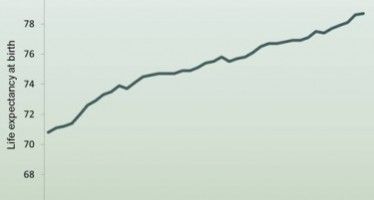Is California a Donor State?
Feb. 10, 2010
By JOHN SEILER
Ever since he began working on the California state budget for fiscal year 2010-11, which begins July 1, 2010, Gov. Arnold Schwarzenegger has been insisting that this is a “donor state,” meaning we send more in tax money to the federal government than we get back in services. Reported the Feb. 3 Glendale News Press:
Schwarzenegger sent a letter this week to members of California’s congressional delegation, asking them to not only support the proposed budget increases for programs in California, but to push for more.
The governor has complained that California receives 78 cents in federal funding for every tax dollar it sends to Washington, while other states receive far more, like New Mexico, which gets $2.03.
If California got more tax money back from the federal government, it more easily could reduce its projected budget deficit of $20 billion.
His calls for more federal cash earned a retort from Sen. Barbara Boxer, D-Calif. Reported the San Francisco Chronicle:
The Democratic senator projected the state would get about $1.45 back for every $1 spent during the fiscal year that ended Sept. 30, largely as a result of the $787 billion federal stimulus bill.
The governor’s press secretary, Aaron McLear, told me that “the numbers Boxer is using are from the one-time stimulus” to the economy, and are borrowed money that has to be paid back, including by California taxpayers. “The stimulus obviously skews the numbers.”
He pointed to a 2007 study by The Tax Foundation, which looked at state-by-state data through 2005, as the source of where Gov. Schwarzenegger got his figures. The 78 cents number was for 2005. The number was 78 cents for 2004 and 79 cents for 2003, so it’s been fairly consistent. (The study has not been updated recently.)
He said that California, in particular, should be reimbursed for the costs associated with illegal immigrants, such as welfare and prison, because immigration is a federal matter. That well may be.
However, the first thing I noticed in the Tax Foundation study’s charts is that the federal government itself spends a lot on overhead. The richest counties in America used to be the northern suburbs of Detroit, where the auto executives lived back in the glory days of the U.S. auto industry.
Now, the counties with the highest incomes are the Virginia and Maryland suburbs of Washington, D.C. Even Santa Clara County, home to California’s computer and Internet billionaires and the highest-income county in our state, didn’t come close to the top.
So, Americans’ tax money doesn’t just go to Washington, then get dispersed to the 50 states. A lot of the tax money stays in D.C. In 2005, the District of Columbia got back $6.08 for every $1 it sent in taxes to the federal government. Virginia got back $1.51 and Maryland, $1.30.
Biggest factors
I called the Tax Foundation and talked to Bill Ahern, the group’s director of policy and communications. Aside from the two states closest to the center of federal spending (see above), he said that the two biggest factors in the federal money ratio are: 1) average age of residents; and 2) income levels.
California’s population is relatively young, so the are on average fewer retirees here. That means fewer Social Security and Medicare checks come here than elsewhere.
Here are the ratios of federal dollars received, compared to those taxed, for popular retirement states in 2005: Alabama $1.66; Arizona $1.19; Mississippi $2.02; New Mexico, $2.03; North Carolina $1.08; South Carolina $1.35; Utah $1.07.
The second factor is income. The U.S. tax code is highly progressive: the more you make, the higher percentage you pay. In 2009 California was home to 80 billionaires, according to a list in Forbes magazine. By contrast, Texas, with two-thirds of our population, had just 38. And Florida, with half our population, had 22. So, our billionaires – and millionaires – pay a lot more into the federal IRS than they are going to get back.
Other high-income states also fare poorly in the ratio of tax dollars they get back: Connecticut $0.69; Delaware $0.77; Massachusetts $0.82; Minnesota $0.72; and New Jersey $0.71.
Ahern said the only way around this is to reduce the progressivity of the tax code. But the opposite is favored by California’s Democratic-dominated congressional delegation. President Obama’s budget proposal would let President Bush’s tax cuts expire next year for millionaires, pushing the top income tax rate from 35 percent to 39.6 percent.
Schwarzenegger himself also has favored a progressive income tax. His income tax increases last year made the state tax code more progressive.
The flip side of billionaires is poor folk. They pay little in taxes but get back food stamps, general welfare, and housing assistance. America’s poorest states are high on the receipt of federal tax dollars. Here are the amounts of federal dollars received, compared to those taxed, for the poorest states in 2005: Alabama: $1.66; Louisiana $1.78; and Mississippi $2.02.
The pork factor
Although pork-barrel spending is infamous, and makes headlines, Ahern said that, surprisingly, it’s not that influential in determining the state ratio of tax dollar receipts. Nor is military spending. “There are demographic and tax-code realities that no politician from any state can change,” he observed.
Certainly, congressmen direct billions of pork to their states and districts. But the days of the powerful politician grabbing vast billions for his local people is over, Ahern said.
The only exception is Robert Byrd, D-West Virginia, who at 92 is the longest-serving senator ever, and has held many money-funneling posts including chairman of the Senate Appropriations Committee and Senate Leader. Notes Wikipedia of The King of Pork:
After becoming chair of the Appropriations Committee in 1989, Byrd sought to steer, over time, a total of $1 billion for public works in the state. He passed that mark in 1991, and the steady stream of funds for highways, dams, educational institutions, and federal agency offices has continued unabated over the course of his membership. More than thirty pending or existing federal projects bear Byrd’s name. He commented on his reputation for attaining funds for projects in West Virginia in August 2006 when he called himself “Big Daddy” at the dedication to the Robert C. Byrd Biotechnology Science Center.
No wonder West Virginia gets back $1.76 for every $1 it sends to the feds. But Byrd is the last of that breed. And West Virginia is a small state with 1.8 million people, 5 percent of California’s.
Military bases
Back when the “Solid South” was almost entirely Democratic, congressman and senators stayed in power for decades and built military bases in their home states, which is why so many bases are in the South. But nowadays, military bases aren’t seen as attractive as they once were, except in poor, sparsely populated areas.
When Marine Corps Air Station El Toro was closed a decade ago in Orange County, billions of dollars in federal money coming into California was “lost.” But hardly anybody objected except local military retirees who then had to drive to San Diego to get discounts at the BX. The property was so valuable in the middle of expensive Orange County that private uses were more productive. (A battle over the use of the land naturally ensued; it’s described in the Wikipedia article.)
“In California, building a new military base wouldn’t make a blip,” Ahern said.
John Seiler, an editorial writer for 19 years at The Orange County Register, currently is a reporter and analyst for Calwatchdog.com. His email: [email protected].
Related Articles
Life imitates sci-fi: Why CA pension crisis is sure to get far worse
The debate in California over public employee pensions has grown familiar in recent times. Those who demand reform finally appear
LAO Rings Death Knell for High-Speed Rail
APRIL 11, 2011 By JOHN SEILER The high-speed choo-choo is dead. A new report by the Legislative Analyst effectively drives
New CA bills push “fake news” education
In the wake of a turbulent election season and a disturbing new study on the credulity of many political




